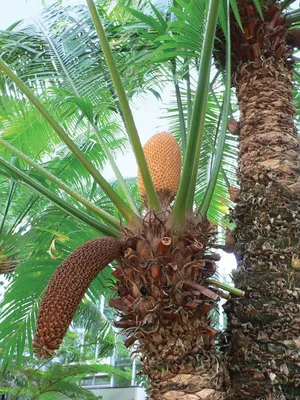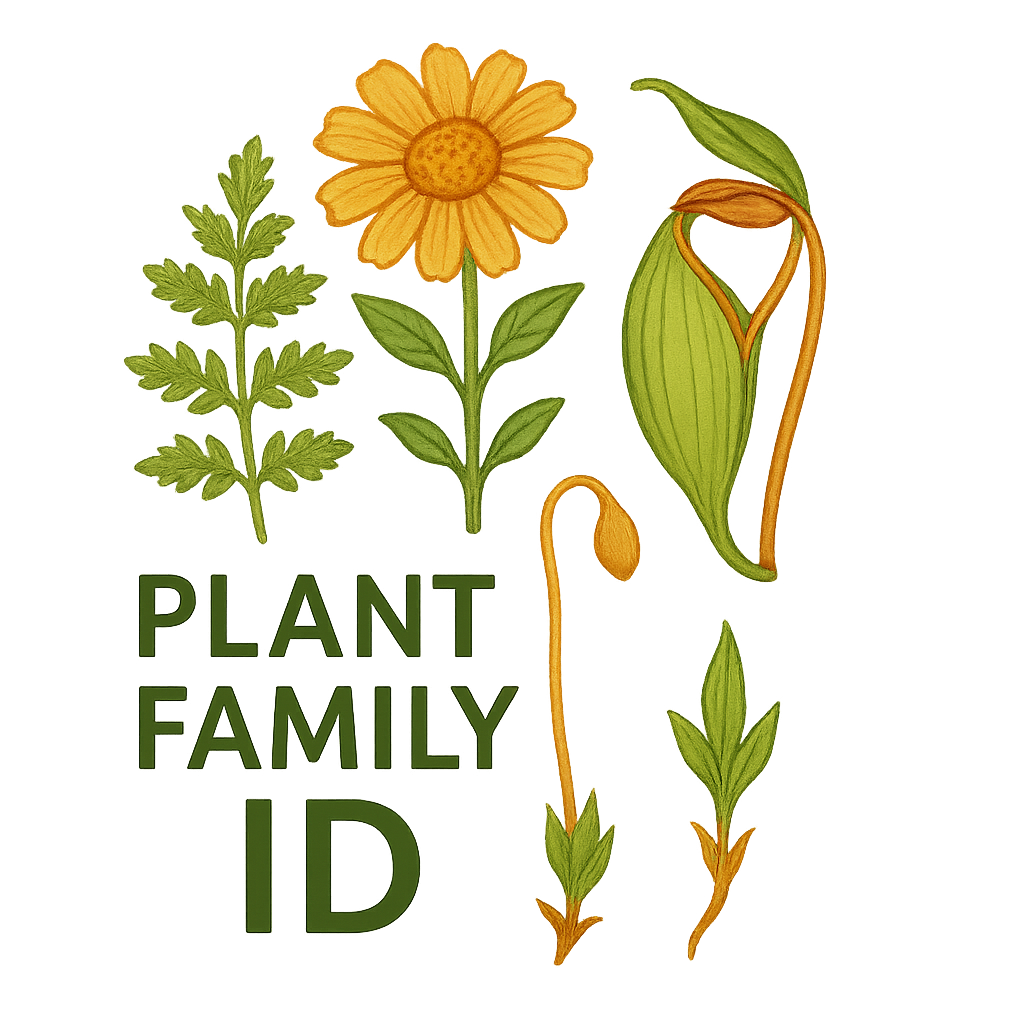Stangeriaceae
Natal Grass Cycad Family
Stangeriaceae is a small family of cycads in the order Cycadales, containing only the genus Stangeria with a single living species, Stangeria eriopus. This distinctive cycad is characterized by its fern-like leaves with pinnately-veined leaflets, a feature unique among cycads. The family is notable for having vascularized stipules and an almost complete absence of cataphylls (scale leaves). Native to coastal Eastern South Africa and Southern Mozambique, the Natal Grass Cycad was initially misidentified as a fern until its reproductive structures were discovered. Like other cycads, it is a gymnosperm with separate male and female plants producing cones.

Overview
The Stangeriaceae family is a small but distinctive group of cycads represented by a single genus, Stangeria, with only one living species, Stangeria eriopus, commonly known as the Natal Grass Cycad. This family has a fascinating botanical history, as the plant was initially described as a fern (Lomaria eriopus) in 1839 by German botanist Gustav Kunze due to its fern-like appearance. It was only later, when reproductive structures (cones) were observed, that it was recognized as a cycad.
The family is named after Dr. Max Stanger, who was the Surveyor General of Natal province in South Africa and collected a specimen in 1851. While today the family contains only one living species, the fossil record suggests that this genus was once distributed globally, making it an important evolutionary link in understanding cycad diversity and distribution.
Stangeria eriopus is native to coastal Eastern South Africa and Southern Mozambique, where it grows in various habitats from open grasslands to forest understories. The species exhibits two distinct growth forms: a forest form with soft, thin, wide leaves, and a more compact form from open grassland with smaller, thicker, stiff leaves.
Quick Facts
- Scientific Name: Stangeriaceae
- Common Name: Natal Grass Cycad Family
- Number of Genera: 1 (Stangeria)
- Number of Species: 1 (Stangeria eriopus)
- Distribution: Coastal Eastern South Africa and Southern Mozambique
- Evolutionary Group: Gymnosperms - Cycadales
Key Characteristics
Growth Form and Habit
Stangeriaceae is characterized by a subterranean stem (caudex) with a tap-root and coralloid roots near the surface that house nitrogen-fixing cyanobacteria. The plant typically grows as an understory component in forests or in grasslands, with its stem remaining almost entirely underground, protected from fire and other environmental stresses.
Leaves
The most distinctive feature of Stangeriaceae is its fern-like leaves with pinnately-veined leaflets, a characteristic unique among cycads (other cycads have parallel or dichotomously branching veins in their leaflets). The leaves emerge from the underground stem and can vary significantly in size and texture depending on the habitat:
- Forest form: Produces soft, thin, wide leaves up to 6 feet (2 meters) long
- Grassland form: Produces smaller, thicker, stiff leaves about 1 foot (30 cm) long
New leaves are covered with woolly hairs, particularly at the base of the petiole (leaf stalk), which gives rise to the species name "eriopus" (Greek for "woolly-footed").
Reproductive Structures
Like all cycads, Stangeriaceae is dioecious, meaning male and female reproductive structures occur on separate plants. Both sexes produce stalked cones:
- Male cones: Elongated, cylindrical structures that produce pollen and emit a distinctive perfume to attract beetle pollinators, particularly the weevil Antliarhinus zamiae
- Female cones: Ovate (egg-shaped) structures that develop fleshy, dark red seeds after pollination
The plant typically matures and begins producing cones after 5-7 years, which is relatively quick for a cycad.
Distinguishing Features
Stangeriaceae can be distinguished from other cycad families by:
- Fern-like leaves with pinnately-veined leaflets (unique among cycads)
- Presence of vascularized stipules
- Almost complete absence of cataphylls (scale leaves)
- Subterranean stem with a tap-root system
- Woolly hairs at the base of the petiole

Distinctive fern-like leaf structure of Stangeria eriopus showing the pinnately-veined leaflets that initially led botanists to classify it as a fern.
Identification
Field Identification Tips
When trying to identify Stangeriaceae in the field, look for:
- Fern-like appearance: The plant strongly resembles a fern with its pinnately-veined leaflets
- Underground stem: The stem is subterranean, with only the leaves visible above ground
- Woolly leaf bases: New leaves have distinctive woolly hairs, especially at the base
- Reproductive cones: If present, the stalked cones clearly identify it as a cycad rather than a fern
- Habitat: Found in coastal Eastern South Africa and Southern Mozambique, either in forest understories or grasslands
Similar Plants
Stangeriaceae may be confused with:
- True ferns: The pinnately-veined leaflets strongly resemble those of certain ferns, particularly in the absence of reproductive structures
- Other cycad families: Can be distinguished from other cycads by its unique leaf venation pattern and subterranean growth habit
- Bowenia (formerly included in Stangeriaceae): Bowenia species (now in Zamiaceae) have bipinnate leaves with a branching midrib, while Stangeria has once-pinnate leaves
Distinguishing Features
The most reliable features for distinguishing Stangeriaceae from similar plants include:
- Leaf venation: The pinnately-veined leaflets are unique among cycads
- Reproductive structures: The presence of cones confirms its identity as a cycad rather than a fern
- Growth habit: The subterranean stem with only leaves emerging above ground is characteristic
For definitive identification, examination of the leaf venation pattern and, if present, reproductive structures is necessary.
Notable Examples
The family Stangeriaceae contains only one living species:

Stangeria eriopus (Forest Form)
Natal Grass Cycad - Forest Form
The forest form of Stangeria eriopus is characterized by soft, thin, wide leaves that can reach up to 6 feet (2 meters) in length. This form is adapted to the shaded conditions of forest understories, where it grows in more protected environments. The leaves are more delicate and broader than those of the grassland form, allowing for more efficient light capture in low-light conditions.

Stangeria eriopus (Grassland Form)
Natal Grass Cycad - Grassland Form
The grassland form of Stangeria eriopus has smaller, thicker, stiff leaves about 1 foot (30 cm) long. This form is adapted to the more exposed conditions of open grasslands, where it must withstand higher light intensity, stronger winds, and periodic fires. The leaves are more robust and compact than those of the forest form, providing greater resistance to environmental stresses.

Stangeria eriopus (Reproductive Structures)
Natal Grass Cycad - Cones
When mature (typically after 5-7 years), Stangeria eriopus produces distinctive reproductive structures. Male plants develop elongated, cylindrical cones that emit a perfume to attract beetle pollinators. Female plants produce ovate cones that develop fleshy, dark red seeds after pollination. These seeds are dispersed by birds, which eat the fleshy outer layer while discarding the toxic inner seed.




